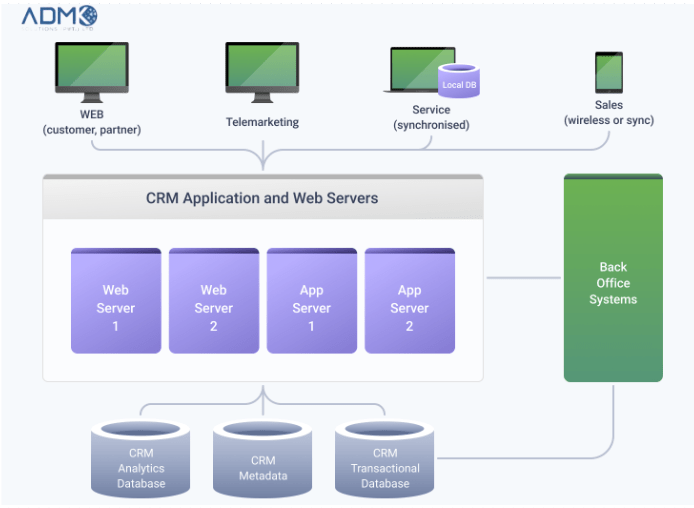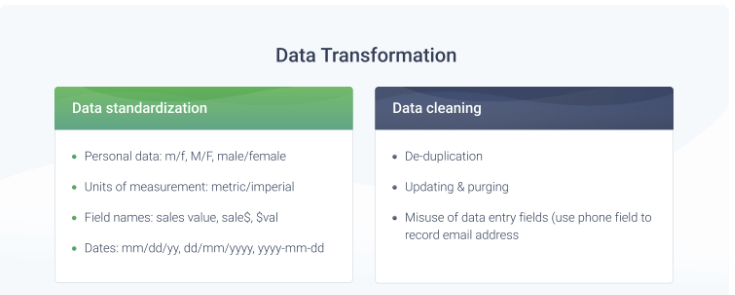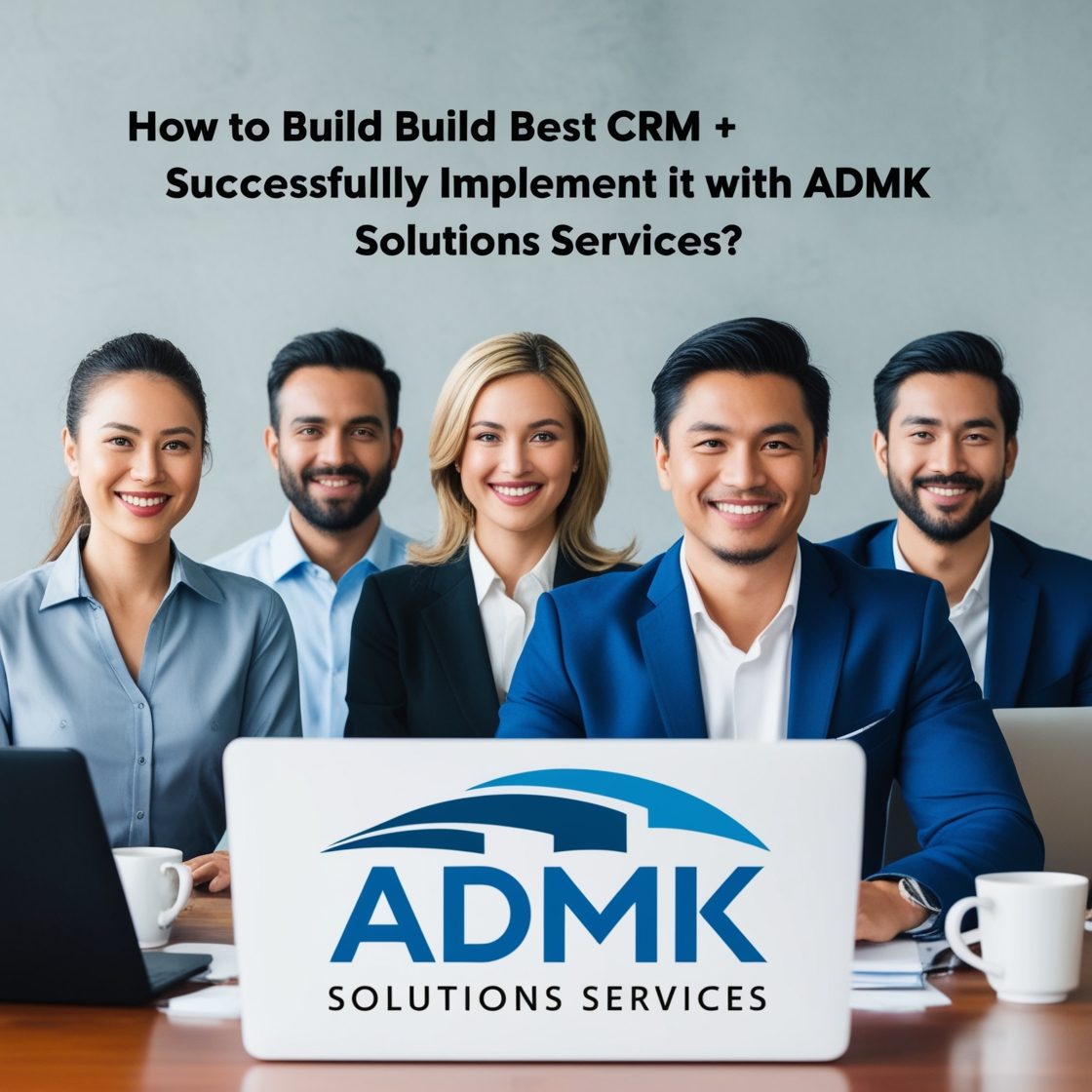Building and Implementing a CRM: A Recipe for Customer Relationship Success
In today’s competitive landscape, fostering strong customer relationships is paramount. A well-implemented Customer Relationship Management (CRM) system serves as the backbone of this endeavor. By centralizing customer data, streamlining workflows, and facilitating communication, a CRM empowers businesses to cultivate loyalty and drive growth. However, building and implementing a CRM effectively requires careful planning and execution. This blog delves into the essential steps involved, guiding you from conceptualization to successful adoption.
Setting the Stage: Defining Goals and Needs

Before diving into development, a clear understanding of your business goals and user needs is crucial. What are you hoping to achieve with a CRM? Do you aim to improve sales pipeline management, enhance customer service interactions, or gain deeper customer insights? Identifying these goals will shape the features and functionalities your CRM needs to possess.
Next, assess the specific requirements of different user groups within your organization. Sales representatives might prioritize lead tracking and opportunity management, while marketing teams might focus on campaign automation and email marketing tools. Understanding these departmental needs ensures a well-rounded CRM that caters to diverse user perspectives.
Building Your Dream CRM: Selecting the Right Technology
With a defined roadmap, it’s time to explore the CRM technology landscape. Numerous CRM solutions exist, each with varying functionalities and pricing structures. Consider factors like:
Scalability: Can the CRM adapt to your business’s growth trajectory?
Customization: Does the platform offer flexibility to tailor functionalities to your specific needs?
Integrations: Does it integrate seamlessly with existing business tools you use (e.g., email marketing platforms, accounting software)?
Security: Does it prioritize data security and offer robust access control features?
Evaluate available CRM solutions through demos, user reviews, and comparisons. Don’t hesitate to involve key stakeholders from different departments in the selection process to ensure a solution that resonates with everyone.
Assemble the A-Team: Building Your Implementation Team

A dedicated implementation team is instrumental in ensuring a smooth transition. This team should comprise individuals with diverse skillsets:
Project Manager: Responsible for overseeing the entire implementation process, ensuring timelines and budgets are adhered to.
CRM Administrator: Configures the CRM system, sets up user permissions, and manages data migration.
Data Analyst: Analyzes existing customer data and oversees its migration into the CRM with utmost accuracy and security.
IT Specialist: Handles technical aspects of the implementation, ensuring system integration and user access.
Department Champions: Representatives from Sales, Marketing, and Customer Service who understand departmental needs and advocate for user adoption.
Effective communication and collaboration are crucial for this team’s success. Regular meetings and progress updates will keep everyone aligned and ensure a streamlined implementation.
Data Migration: The Lifeblood of Your CRM

Customer data is the heart of your CRM. Migrating clean and accurate data from existing systems is essential. This process often involves:
Data Mapping: Identifying corresponding fields between your old system and the new CRM.
Data Cleansing: Eliminating duplicates, correcting inconsistencies, and ensuring data accuracy.
Data Migration Tools: Utilizing software tools can streamline data transfer and minimize errors.
Investing time and resources in data migration will pay off in the long run. Accurate and comprehensive data empowers users to make informed decisions and personalize customer interactions.
Testing, Training, and User Adoption: The Keys to Success
Before launching the CRM, thorough testing is crucial. Identify and address any bugs or usability issues to ensure a smooth user experience. The implementation team should create comprehensive training materials and conduct user training sessions tailored to different departments. Training should not only focus on system functionalities but also emphasize the importance of data entry and consistent CRM usage.
User adoption is vital for extracting maximum value from your CRM. Encourage user feedback and address concerns promptly. Consider gamification or incentive programs to boost user engagement. Regular communication about the benefits of the CRM will foster a culture of CRM utilization within your organization.
Pro Tip: Champion early wins! Showcase how the CRM has helped close deals, improve customer service interactions, or generate valuable customer insights. Highlighting success stories will motivate users and reinforce the value proposition of the CRM.
Going Live and Beyond: Monitoring and Continuous Improvement
Launching the CRM marks a significant milestone. However, the work doesn’t stop there. Continuously monitor user activity, track key performance indicators (KPIs) aligned with your CRM goals, and identify areas for improvement.
Usage Analytics: Analyze how users interact with the CRM to identify potential bottlenecks or underutilized features.
Customer Satisfaction Surveys: Gather feedback from customers regarding their experience with the new system.
Data-Driven Decision Making: Utilize CRM data to identify customer trends, personalize marketing campaigns, and optimize sales strategies.
Beyond the Basics: Advanced Considerations for a Robust CRM

While the core steps outlined above provide a solid foundation, consider these additional factors for a truly robust CRM implementation:
- Security and Compliance: Implement robust access controls, user authentication measures, and data encryption protocols to safeguard sensitive customer information. Ensure compliance with relevant data privacy regulations like GDPR or CCPA.
- Mobile CRM: In today’s mobile-first world, a mobile CRM application empowers users to access and update customer data on the go. This fosters real-time interaction and improves overall responsiveness.
- Artificial Intelligence (AI) and Machine Learning (ML): CRM solutions are increasingly incorporating AI and ML functionalities. These can automate tasks like lead scoring, churn prediction, and personalized customer recommendations, enabling data-driven decision making and improved customer experiences.
- Reporting and Analytics: Robust reporting and analytics tools are essential for measuring the impact of your CRM efforts. Identify trends, track conversions, and measure the return on investment (ROI) to continuously optimize your CRM strategy.
Building for the Future: Scalability and Adaptability
A successful CRM should evolve alongside your business. Choose a platform that offers scalability to accommodate future growth and changing requirements. Regular updates and system enhancements are crucial to stay ahead of the curve.
Embrace a culture of continuous improvement. Regularly solicit feedback from users and key stakeholders to identify areas for improvement. The CRM should adapt to your evolving business needs and industry trends to ensure long-term effectiveness.
Contacting ADMK Solutions
Building Customer Relationships that Last
Implementing a CRM is an investment in your customer relationships. By following these steps and continuously adapting your strategy, you can leverage the power of CRM technology to:
Streamline workflows and improve operational efficiency.
Gain valuable customer insights and personalize interactions.
Boost sales and marketing effectiveness.
Enhance customer service experiences and build loyalty.
A well-implemented CRM system serves as the cornerstone of strong customer relationships, ultimately driving growth and success for your business.
In conclusion, building and implementing a CRM requires a strategic approach. By defining your goals, selecting the right technology, assembling a dedicated team, and prioritizing data accuracy and user adoption, you can lay the foundation for a successful CRM implementation. Remember, a CRM is a living entity. Continuous monitoring, adaptation, and a commitment to user engagement will ensure your CRM remains a powerful tool for cultivating lasting customer relationships.
